Last Updated on November 24, 2020 by teamobn
The fresh, sweet, pungent taste is reason enough to grow it, but cantaloupes are also full of nutrients such as vitamins A and C. Cantaloupe – also called muskmelon – can be grown in any sunny yard that has well-draining, fertile soil and a 12-week growing season.
In places that do not enjoy long growing seasons, gardeners need to start the seed indoors in pots several weeks before the last frost date.
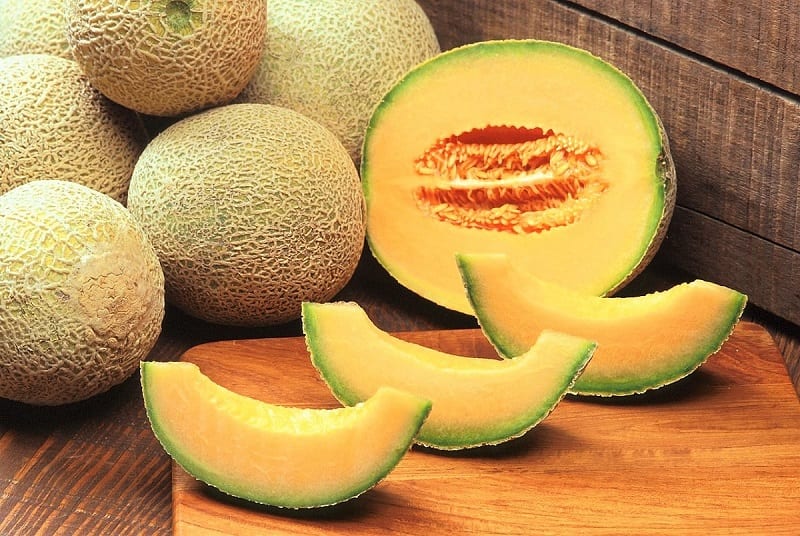
Growing Cantaloupes in Your Backyard
Contents
Cantaloupe plants need about 85 days to mature, but you shouldn’t rush planting. When growing from seeds in the garden, start sowing only once outdoor temperatures are pegged at between 50°F and 60°F.
Below are tips on growing cantaloupes in your backyard.
Preparing the Site
For best results, amend your planting bed with aged manure or compost before planting. Experienced gardeners recommend planting cantaloupe in raised rows. The raised beds ensure good drainage and will hold the sun’s heat longer.
If you have limited space in your garden, you can train the vines to a stake or trellis. Make sure you establish the supports on the bed before planting. Do not wait until the seeds sprout to push the supports into the ground as you will risk damaging the roots.
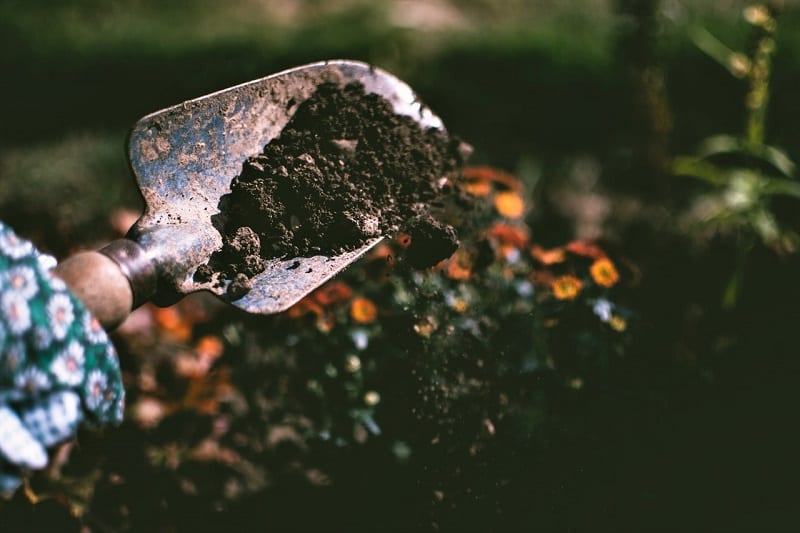
Planting Cantaloupe Seeds
Plant cantaloupe seeds in groups of two to three seeds spaced 2 feet apart. If you do not intend to train the vines onto a trellis, you should allow around 3 feet of space between the rows. Once seedlings emerge, keep only the strongest individual plant in each group. Pull out the rest for your compost heap.
In cooler climates with shorter growing seasons, start cantaloupe seeds in pots indoors several weeks before the last frost date. However, keep in mind that melons are particularly sensitive to root disturbance. Be careful when transplanting the seedlings outdoors.
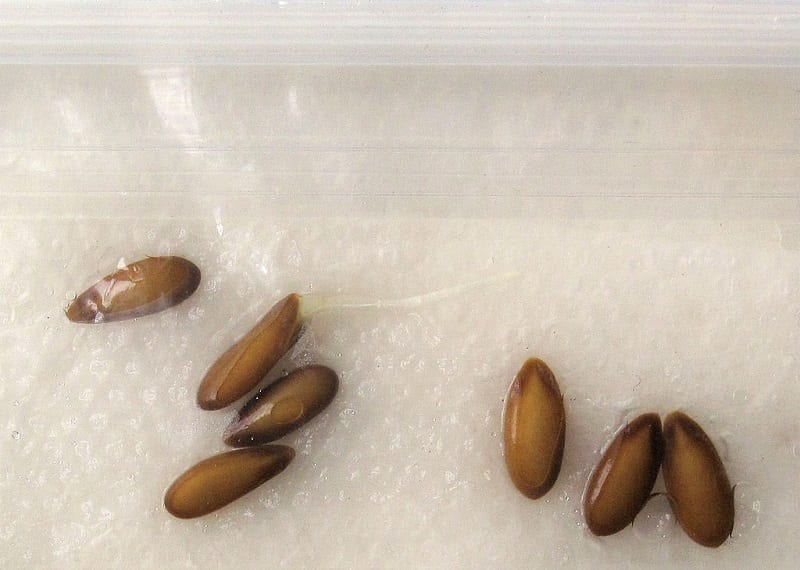
(Photo: Downtown Gal/Wikimedia Commons)
Watering Cantaloupe Plants
Keep the soil moist with frequent watering when the seeds begin germinating. Once the seeds have germinated, you should adjust your watering to suit the needs of the developing plants. The plants will need 1 to 2 inches of water each week once the vines begin to grow.
Experts suggest deep but infrequent watering while the plant is growing, blooming, and setting fruit. Water in the morning, and try to avoid wetting the leaves. Because cantaloupe blossoms require pollination to set fruit, grow dill or bee balm near your planting bed to attract pollinators.
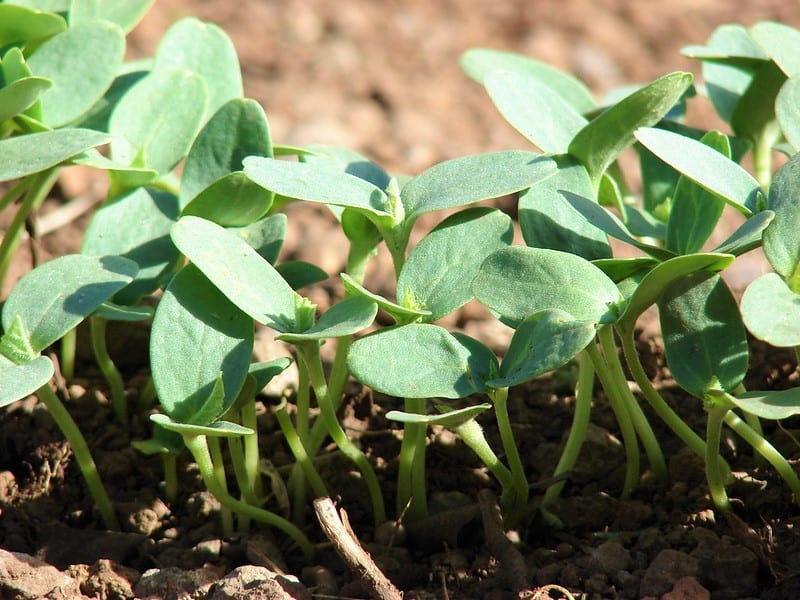
(Photo: Forest and Kim Star/Flickr)
Mulching and Pruning
Mulch the area with black plastic to keep the soil warm and hinder the growth of weeds. The plastic will also keep any developing fruits clean. Reduce watering once the fruits are growing.
As the fruits mature, gradually reduce – and then stop – watering. Too much moisture at this point can cause the rinds to split. Dry weather produces the sweetest melons.
You should also prune the end buds off the vines. Your plants may produce fewer melons, but the fruits will be larger and of better quality.
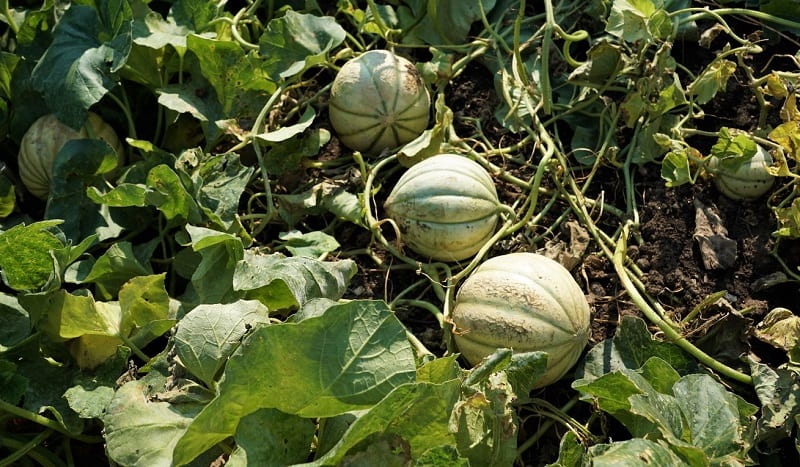
Harvesting Cantaloupes
Depending on weather conditions, cantaloupes will usually ripen within 35 to 45 days of pollination. The green skin of the fruit turns a lovely, creamy yellow-beige color. Experts say you should not wait for the fruit to fall off the vine.
Instead, watch for signs that the fruits are ready for harvesting, then gently twist the fruit from the stem. The sweet fragrance of ripe, home-grown cantaloupes is impossible to miss. The “netted” surface of the fruit becomes rough, and the tendrils near the fruit turn a tawny, dry color.
When fully ripe, cantaloupes easily slip away from the vine. If not, stop and let the fruit ripen on the vine for another few days. Cantaloupes do not ripen once they are removed from the vine.








